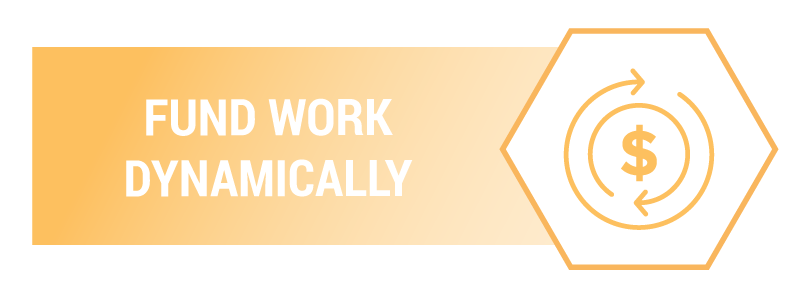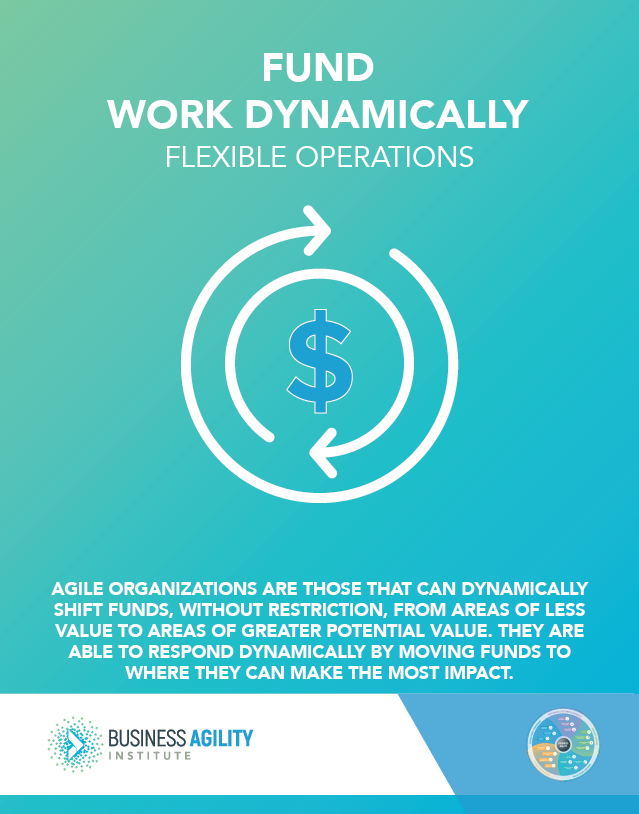Domains of Business Agility
- Responsive Customer-Centricity
- / Fiercely Champion The Customer
- / Sense & Respond Proactively
- / Integrate Diverse Ideas
- Engaged Culture
- / Cultivate A “Learning Organization”
- / Engage Transparently & Courageously
- / Embed Psychological Safety
- / Act As One
- Value-Based Delivery
- / Unleash Workflow Creatively
- / Prioritize. Prioritize. Prioritize.
- / Deliver Value Sooner
- / Seize Emergent Opportunities
- Flexible Operations
- / Adapt Strategies Seamlessly
- / Fund Work Dynamically
- / (Re)Organize Structures Fluidly
- / Balance Governance And Risk
- People-First Leadership
- / Foster Authentic Relationships
- / Empower With Accountability
- / Realize People’s Potential
Metaphorically, money is the blood pumping through an organization. That means that funding — the ability to circulate money where it’s needed — is your organization’s beating heart. Agile organizations are those that can dynamically shift funds, without restriction, from areas of less value to areas of greater potential value. They are able to respond dynamically to changing circumstances and emergent possibilities by moving organizational funds to where they can make the most impact.
Funding work dynamically can reveal breakthrough opportunities. In most organizations, this means changing the ways funds are allocated — from funding projects and departments that follow a set budgetary cycle to funding business outcomes strategically and on an “as-needed” basis. The potential benefits in innovation, growth, and customer value are truly massive.
Primary Behaviors
The following 4 behaviors strongly contribute to the ability to fund work dynamically.
B56: Executives dynamically, and strategically, (re)allocate funds based on data and outcome measures: Funds can be moved to where it is needed most, regardless of prior decisions. Executives can change their minds as more information becomes available.
B57: Leaders have autonomy over their allocated funds: Funds are assigned (whether to team(s), product(s), or a value stream) without granular constraint on exactly how those funds must be spent. This goes hand-in-hand with the need for leaders to keep their commitments. Funds will be reallocated if not.
B58: Executives decouple internal funding cycles from external reporting cycles: External reporting doesn't dictate how we plan and spend our money internally.
B59: Executives tailor funding approaches and frequency to the type and context of the work: We change our funding approaches depending on context; including (but not limited to) project-based funding, funding value-streams, funding stable teams, etc.


